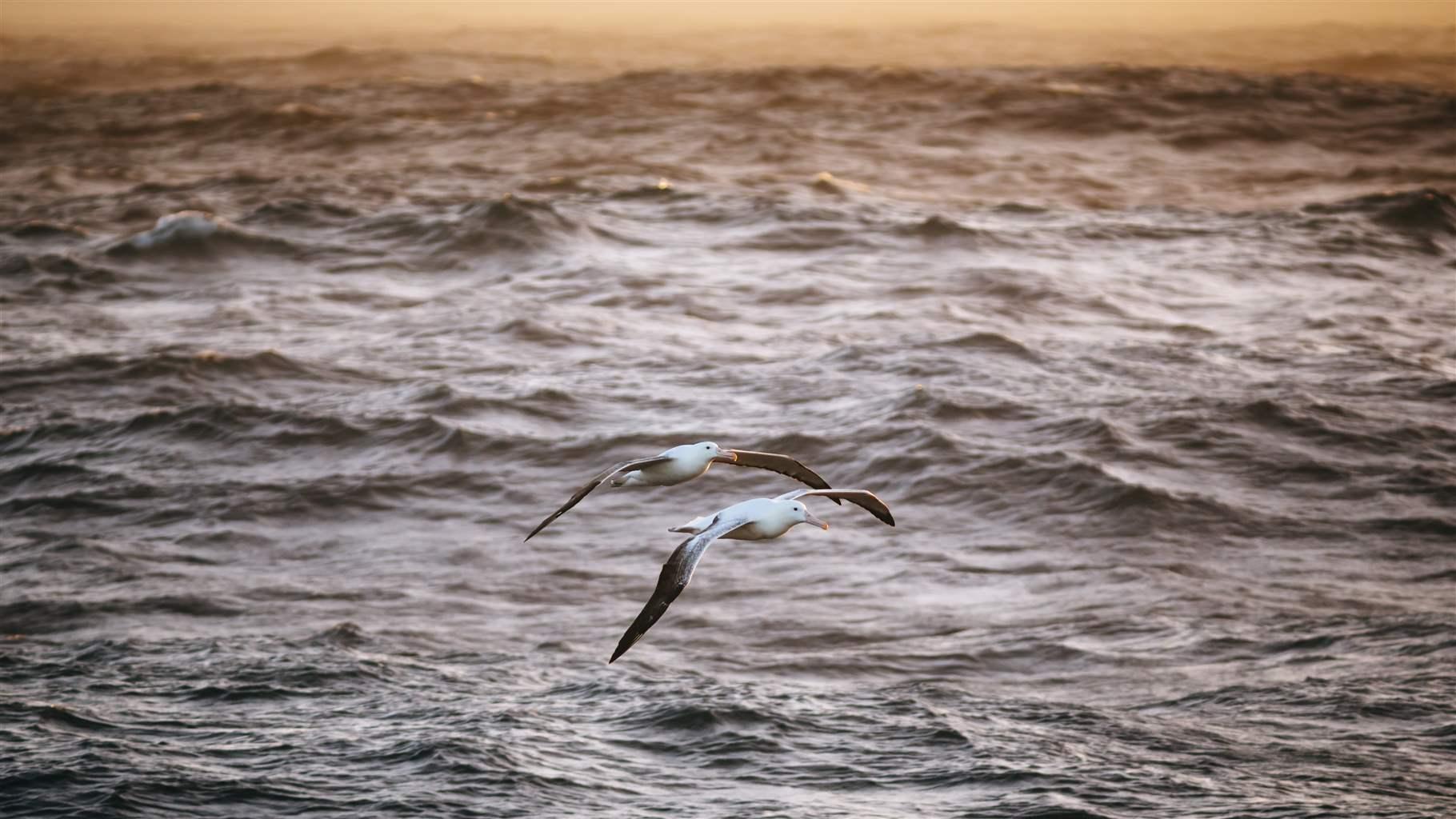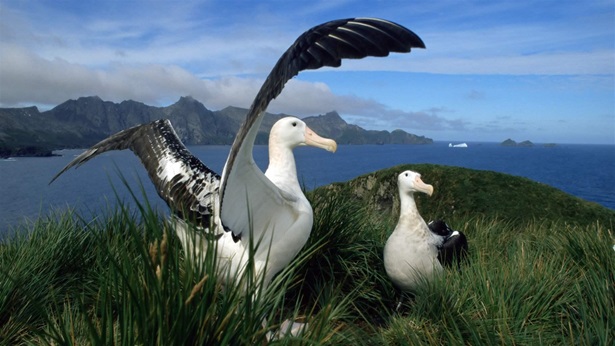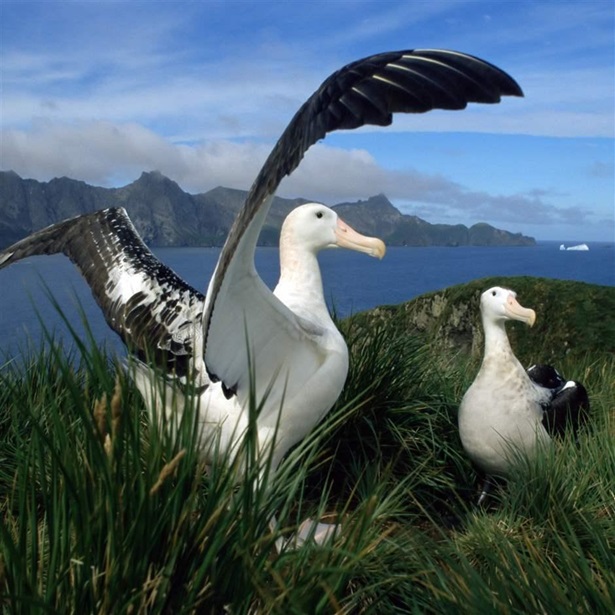With Small Changes, Fishers Can Drastically Reduce Seabird Deaths
Setting lines deeply and at night led to a 99% lower seabird bycatch rate in a Pacific tuna fishery

Open-ocean seabirds such as albatrosses and large petrels are highly vulnerable to capture in commercial fishing gear because they tend to follow and scavenge from fishing vessels and dive on baited hooks as they are released into the water. This is a problem particularly with longline boats targeting tuna and other large fish species and results in the unintended capture and drowning of tens of thousands of birds each year.
But these deaths can be reduced: New research shows that small changes to fishing practices—most critically, adjusting the time of day that fishers set their lines—can produce big conservation benefits for seabirds at little to no extra cost to fishers.
The study, recently published in the journal Scientific Reports, investigated how time of day and depth of fishing affected bycatch rates of albatrosses and other seabirds in a temperate Pacific longline fishery targeting albacore tuna. The researchers found that setting baited fishing gear deeply and at night resulted in a staggering 99% lower seabird catch rate than lines set shallowly during the day—all while having little impact on the catch rate for tuna. The team found that setting lines deeply during daylight hours also produced a significant, but lesser, reduction in seabird bycatch.
As Eric Gilman, a 2020 Pew marine fellow and lead author of the study, explained, “The study findings are extremely encouraging. Vessels could produce substantial conservation gains for albatrosses—without causing economic costs or trade-offs with other threatened species—by shifting their fishing operations by two to three hours so that they finish deploying all gear before sunrise.”
To avoid reducing the total amount of time that lines are in the water, which could affect catch of target species such as tuna, the study authors suggest that lines could be released earlier in night—soon after nautical dusk. Gilman clarified that exclusively setting fishing gear deeply and at night may not be the right approach for all fisheries.
“This might not be operationally feasible in all pelagic longline fisheries, including for smaller vessels, and in some regions due to the way some commercially important fish species are distributed in the water column throughout a 24-hour cycle,” Gilman said.
The team found that setting lines deeply and at night had an added benefit of reducing unintended catch of other threatened marine wildlife known to be vulnerable to longline fishing.
“Nighttime deep setting not only reduces seabird captures but also avoids risks to threatened shallow-habitat species such as marine turtles and silky and oceanic whitetip sharks,” explained Milani Chaloupka, one of the study authors.
The researchers caution that while most seabirds that are vulnerable to becoming hooked in longline fishing gear hunt only during the day, nighttime gear setting could result in higher catch rates for some seabird species that forage at night or around dawn and dusk. Some species of shark that live at deeper depths, such as thresher sharks, could also be affected by a shift to deeper fishing. The team explains that fishery managers could use a planning process—called a bycatch management strategy evaluation—to identify and minimize these trade-offs.
The study findings present a promising opportunity to reduce seabird bycatch without compromising profitability in some commercial fisheries, and the authors suggest that additional research would be useful for understanding the commercial viability of nighttime deep setting for longline fishing across a broad range of geographies and target species. Gilman concluded, “In light of the critical threat that high seas surface longline fisheries pose to several seabirds, we urgently need solutions with high promise of adoption, such as those identified in this study.”
Nate Fedrizzi works on the Pew Fellows Program in Marine Conservation.














